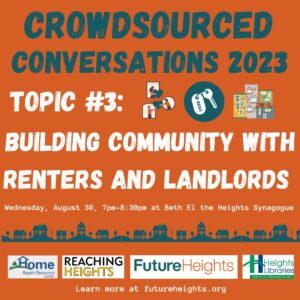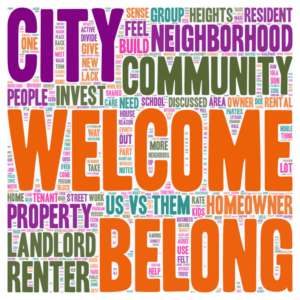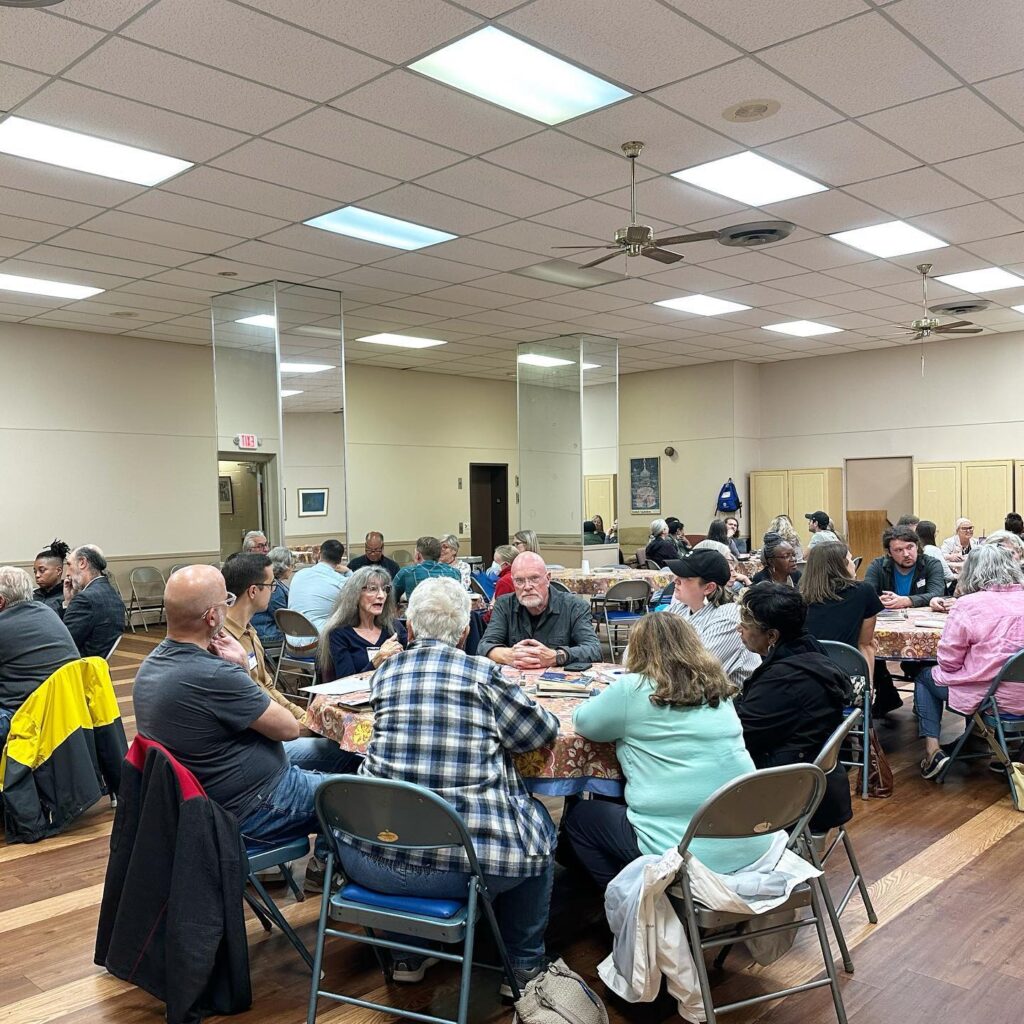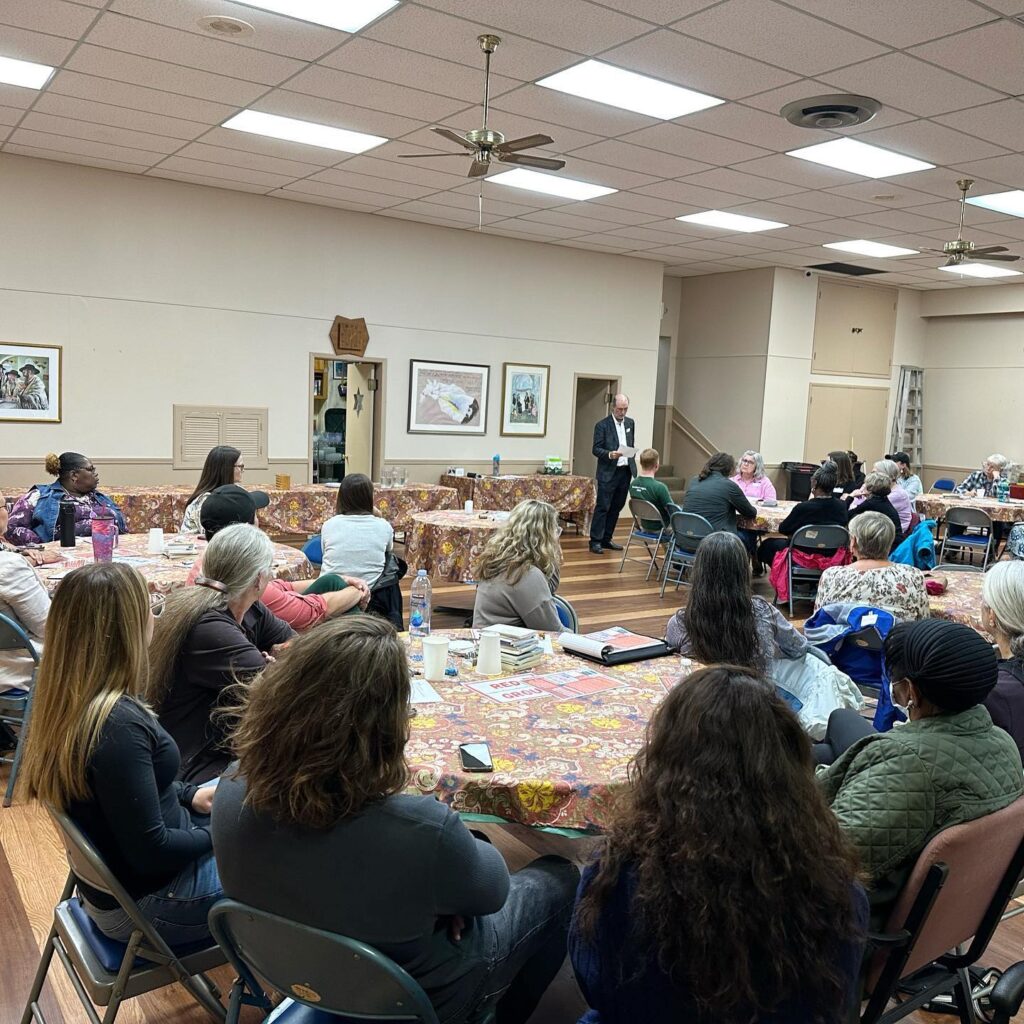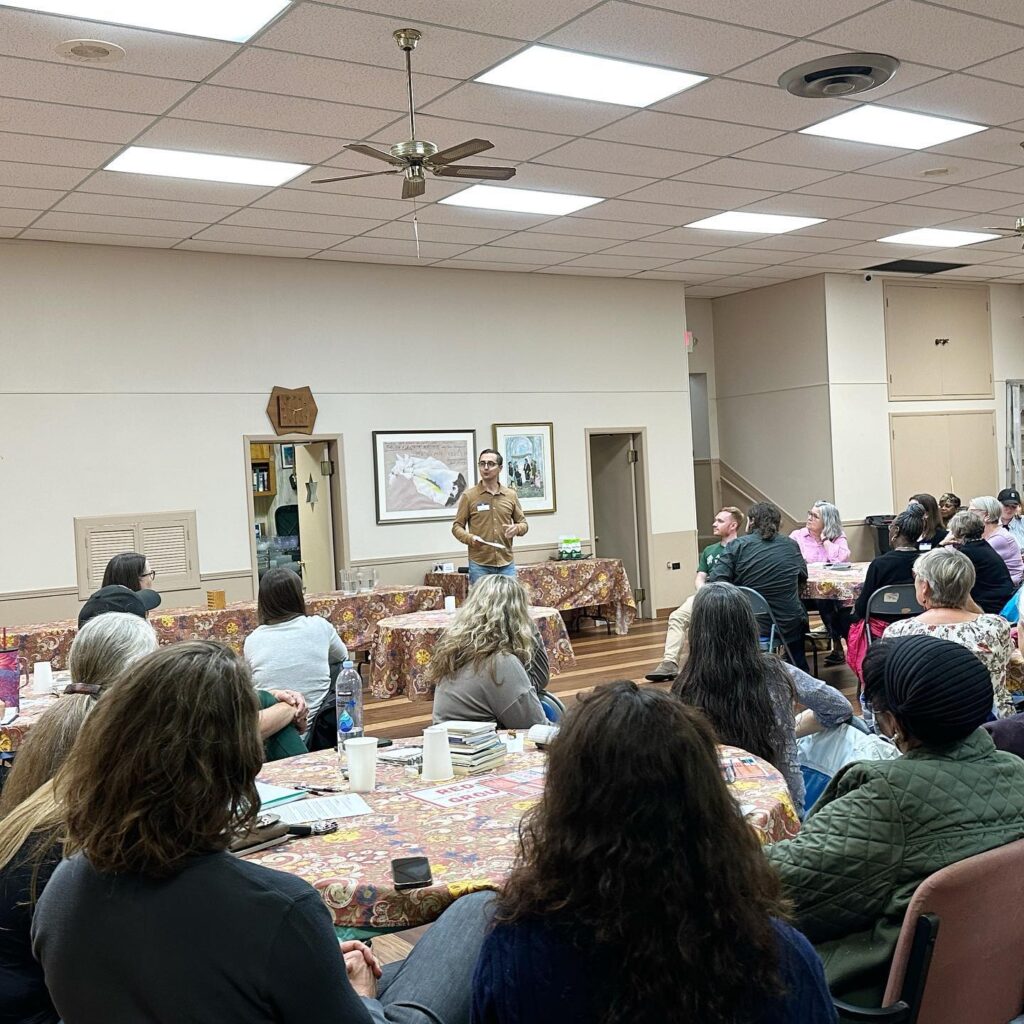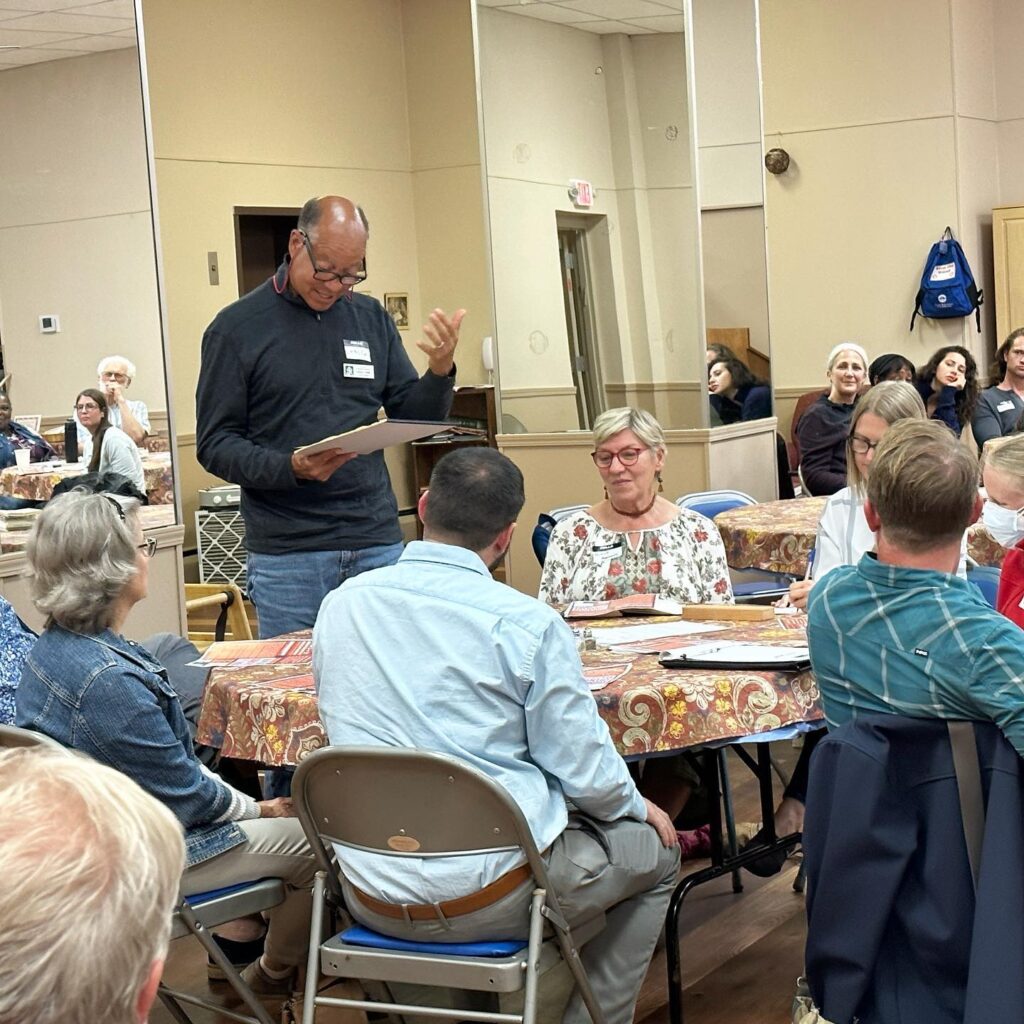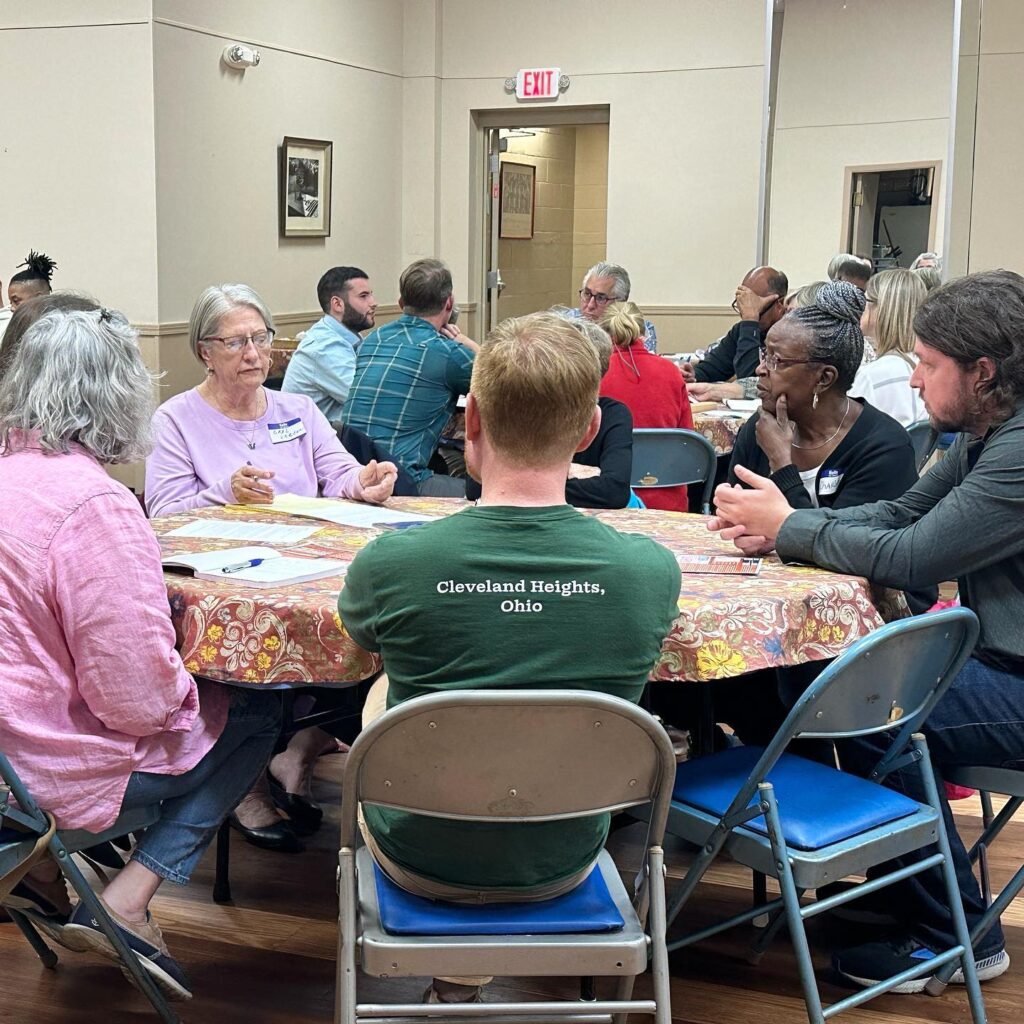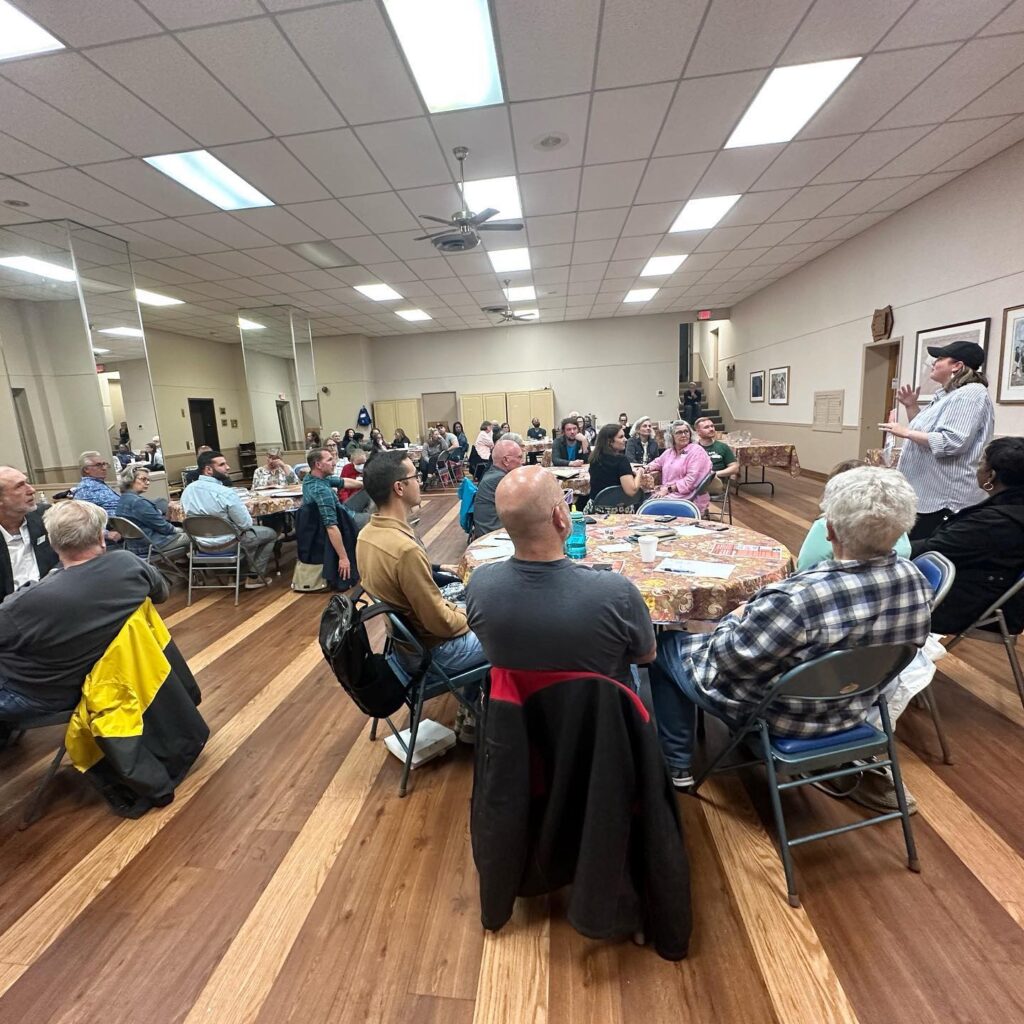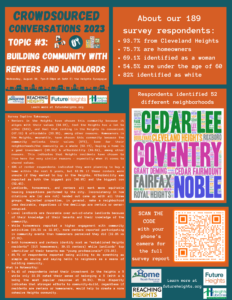WELCOME TO THE RESOURCE PAGE FOR OUR CROWDSOURCED CONVERSATION FORUM ON THE TOPIC OF BUILDING COMMUNITY WITH RENTERS AND LANDLORDS!
On Wednesday, August 30 around 50 Heights community members gathered at Beth El The Heights Synagogue to participate in our third Crowdsourced Conversations event of 2023, this one on the topic of “Building Community with Renters and Landlords.” Special thanks to Cleveland Heights Councilperson Tony Cuda and Cole Ware (Coventry Neighborhood Group, Coventry Living Room Project) for their opening remarks!
ACTION STEPS: Each group identified meaningful action steps they could take, either individually or as part of the collective. Here are some highlights from each group.
BLUE GROUP: They identified several ways to increase a sense of welcoming and belonging in their neighborhoods. Ideas included adding public transportation; more mixed-use development; community building events such as Crowdsourced Conversations; more street events featuring food trucks; farmers market; block club events; participating in the Heights Bike Coalition; street directory listing neighbors; a street Facebook page; Welcome wagon; and setting a water bowl out for people walking their dogs.
GREEN GROUP: They also identified key factors that can aid in building a welcoming neighborhood. Their ideas include creating opportunities for everyone to contribute/get involved; neighborhood parties; having an active street association; being mindful of who your neighbors are (ex: families that have kids might be interested in different activities than those who don’t have kids); avoiding assumptions and pre-judgements about who your neighbors are; sharing resources, helping out neighbors (ex: lawn maintenance); circulating information about area community gardens or other groups to join.
PINK GROUP: They noted that neighborhoods with established block clubs or groups make it a little easier for residents to get to know each other — so if your neighborhood has such a group, make sure to let new neighbors know about it! They also suggested that if it’s possible to for you to spend time sitting out on your front porch or spend time in your front lawn, that increases a sense of welcoming and helps neighbors get to know each other. Having events like a neighborhood garage sale or hosting annual block parties are also great assets in community-building with neighbors.
PURPLE GROUP: They had some action steps about building a strong connection with the community, including: join your neighborhood school’s PTA (you don’t have to have kids in the school to be active in the PTA); knowing what groups are doing in the community increases a sense of connection and eases the path to participation; signing up for free newsletters offered by schools, neighborhood groups, and others is a good way to stay informed (possible follow-up for the CC organizers is including these on the resources page); attending events (ex: Homecoming parade on September 22); volunteering for one-time activities, such as Reaching Heights’ One and Done program or Noble Neighbors welcome back to school chalking at the schools the evening before classes start. They also suggested bringing homeowners and renters together in informal gatherings like block parties – “it is difficult to demonize someone when you’ve shared hotdogs with them.”
RED GROUP: This group had a few area landlords who also live in the neighborhoods where their rental properties are. They are intentional about building community with their tenants — which is a strong advantage to having landlords who are also local. Members of this group also thought creating/bringing back Welcome Packets to distribute to new residents would help them feel instantly more part of the community and aware of the resources and opportunities available. Doing regular neighborhood cleanups to reduce trash/litter/debris helps build neighborhood pride while also giving residents a chance to get to know each other.
YELLOW GROUP: This group also advocated for the return of Welcome Packets for both new residents and new business owners. Additionally, they would like to see more apartment buildings with common areas included in the design. Perhaps if renters were given more of an opportunity to meet and connect with each other, it could help them build stronger ties with the community-at-large.
Here are some additional ideas for action steps:
- Host your own small group action-oriented discussions with your family, friends, and neighbors. You can even use our small group discussion questions from our “Building Community with Renters and Landlords” event to get you started!
- Write articles or op-eds — or maybe even inquire about being a columnist — for the Heights Observer.
- Join us for the next Crowdsourced Conversation forum to meet other engaged Heights residents.
- Renters & Landlords Forum
Resources:
For renters and landlords:
- Chapter 5321 – Ohio Revised Code Ohio Laws
- The Legal Aid Society of Cleveland: Tenant’s Rights
- Ohio State Bar Association Law Facts: Tenant-Landlord Rights and Obligations
- US Department of Housing & Urban Development (HUD): Tenant Right Laws & Protections – Ohio
- Ohio Attorney General: Fair Housing Guide for Landlords
- Emergency Rental Assistance
- Cleveland Heights Municipal Court Rent Escrow Procedures
- City of Cleveland Heights info about rentals
- Cleveland Heights Municipal Court Rent Escrow Procedures
- Cleveland Heights Municipal Court: Landlord/Tenant information
- City of Cleveland Heights Housing Inspections FAQ’s
- City of Cleveland Heights Rental Inspection information & Checklist
- Cleveland Heights apartments – landlord & property owner contacts
- City of University Heights info for renters & landlords
- City of University Heights rental registration form
- Resources for new residents: Cleveland Heights;
Community-Building:
- City of Cleveland Heights – Block parties
- Learn about City of Cleveland Heights events by signing up for the weekly e-news.
- City of University Heights – Block parties
- Learn about City of University Heights events by signing up for the weekly e-news.
- Heights Library’s “Check Us Out” program guide
- Learn more about Cleveland Heights Neighborhood Groups
If you have suggestions for additional resources to be added to this page, please email Sarah at swolf@futureheights.org.

